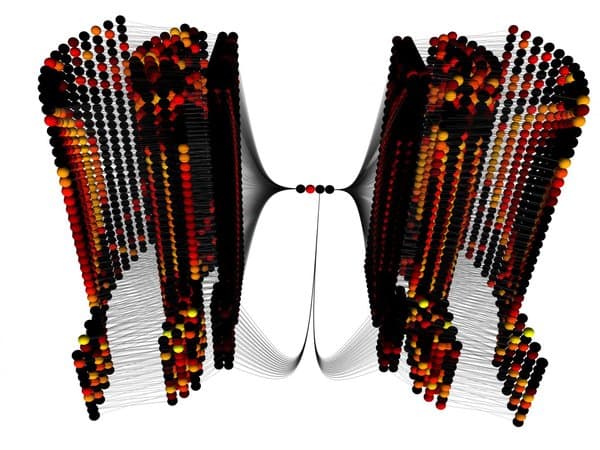Emulating Bee-Like Movement Could Hold The Key To Next Generation Autonomous Robots
Tiny flies, just born in the laboratory could soon cement its place in the list of artificial flying objects. A research team from the University of Sheffield has recently devised an algorithm, that is mathematically weaved with the complex methodology possessed by a compound eye, especially those possessed by bees. This sophisticated development would boost the man-made interconnections between robotic vision and movement.
Bees are naturally gifted with compound eyes, where thousands of photoreceptors are placed in a particular orientation which prompts a bee to stay at a safe distance from an obstacle. The scientific world has found evidences suggesting that a bee takes the help of a phenomenon known as optic flow, defined as the movement of an image, corresponding to movement of an observer. However, the mechanism with which they channelize the procedure was still unknown. The only affirmative documents related to an arthropod's neural network signifies the directional movement, but does not reveal significant information related to its flight speed.

A visualization of the model taken at one time point
The current approach puts in effort to refurbish today's robots with it's latest findings regarding the same. The study highlights how a motion-directional method could be intertwined with motion-speed in case of the neural circuitry of a bee. Dr Cope, one of the authors explained that even with one million neurons, bees could create a wonder on the basis of its speed and directional properties.The understanding associated with the research will result in greater innovation, which might help to develop the next generation cyborgs with inbuilt bee eyes and a state-of-the-art navigation system.
Professor James Marshall, a lead author hinted that due to the bees’ vision mechanism they get confused seeing a transparent window as it could not generate any optic flow. The team would like to now light up other aspects of their research. The complete research paper entitled "A Model for an Angular Velocity-Tuned Motion Detector Accounting for Deviations in the Corridor-Centering Response of the Bee" has been published in the PLOS Computational Biology journal.
Watch Honeybee Corridor Centring Model response related to the research:
Source: <a href="https://www.sheffield.ac.uk/news/nr/bee-model-1.573018" target="_blank" rel="nofollow noopener noreferrer">Bee model could be breakthrough for robot development - Archive - News archive - The University of Sheffield</a>
Bees are naturally gifted with compound eyes, where thousands of photoreceptors are placed in a particular orientation which prompts a bee to stay at a safe distance from an obstacle. The scientific world has found evidences suggesting that a bee takes the help of a phenomenon known as optic flow, defined as the movement of an image, corresponding to movement of an observer. However, the mechanism with which they channelize the procedure was still unknown. The only affirmative documents related to an arthropod's neural network signifies the directional movement, but does not reveal significant information related to its flight speed.

A visualization of the model taken at one time point
Professor James Marshall, a lead author hinted that due to the bees’ vision mechanism they get confused seeing a transparent window as it could not generate any optic flow. The team would like to now light up other aspects of their research. The complete research paper entitled "A Model for an Angular Velocity-Tuned Motion Detector Accounting for Deviations in the Corridor-Centering Response of the Bee" has been published in the PLOS Computational Biology journal.
Watch Honeybee Corridor Centring Model response related to the research:
Source: <a href="https://www.sheffield.ac.uk/news/nr/bee-model-1.573018" target="_blank" rel="nofollow noopener noreferrer">Bee model could be breakthrough for robot development - Archive - News archive - The University of Sheffield</a>
0
